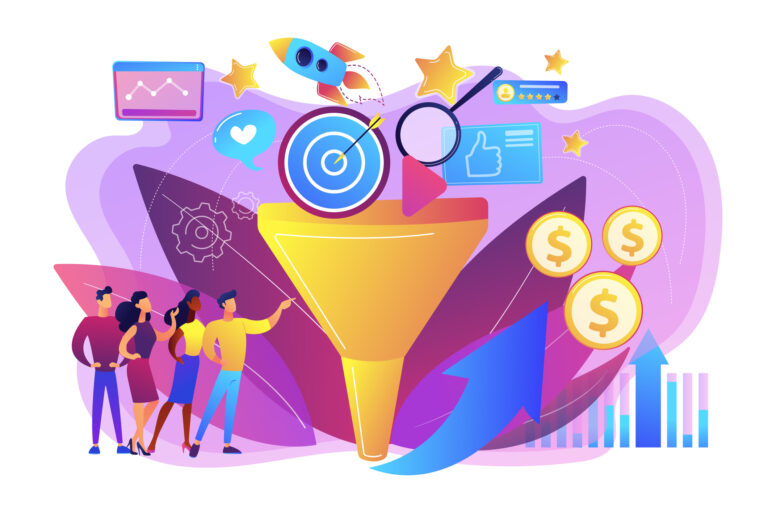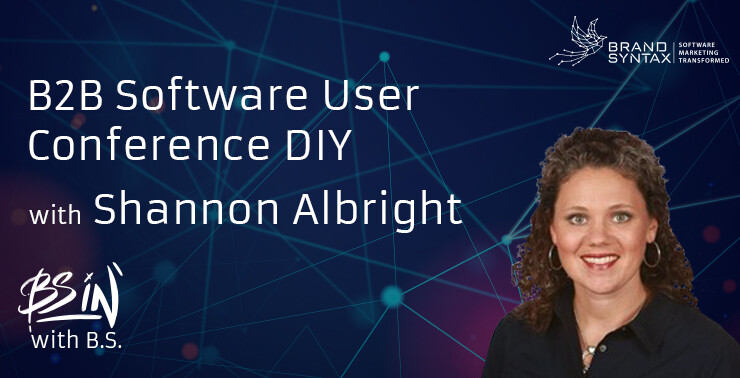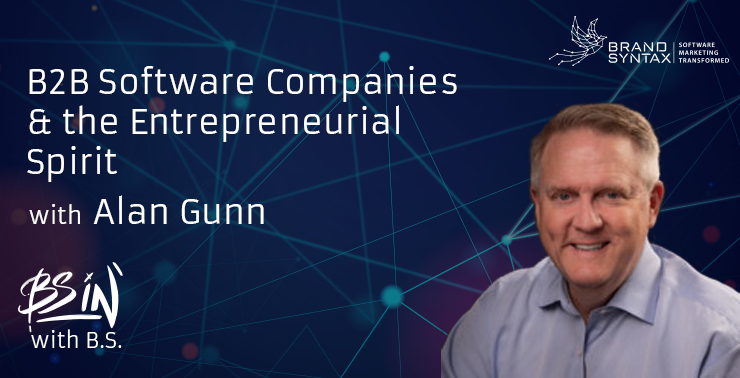In today’s hyper-digital, customer-centric landscape, finding marketing advice is easy. There are thousands of blogs, agencies, and marketing platforms willing to share tips, strategies, and processes aimed at helping you build a cohesive marketing game plan. But what if you can’t use any of those dime-a-dozen strategies? For niche companies (especially in the oh-so-competitive B2B software marketplace), the vast majority of marketing tips don’t plug-and-play with your customers.
Sure! Account-based marketing (ABM), firmographics, and content are all still important for niche software companies — regardless of how narrow your solution is in the market. But you can’t expect these types of strategies to naturally work without some tweaks. You probably have a long sales cycle that involves lengthy nurturing routines and plenty of mid-funnel and bottom-funnel content (which are usually sparse in short-cycle funnels). Additionally, you need key accounts and high-level decision-makers, so it makes far more sense to spend significant capital capturing a tiny portion of the market.
Luckily, marketing a niche B2B solution doesn’t have to be painful. Here are some tips that make sense for B2B businesses that fall into the software space.
1. Create Plenty of High-Value Low-funnel Content
For B2C companies, blog posts are the golden standard of content that helps them carve out a slice of the market. For your sales cycle, they’re more like a cherry — not the pie. You need hyper-informative content (especially if you’re a newer entry into the market) that provides organic knowledge and information without pushing too hard for the sale. The truth is, your product is complicated. You have to dig in and teach people how to use it and what it does.
This may not be a problem for established software providers (think Salesforce). They have thousands of external blogs that are educating customers for them. You probably don’t have this reach. So, you need to create content that acts as a sales tool, a marketing tool, and an informative tool. Generally, this includes content like:
- White papers
- Webinars
- Case studies
- eBooks
- Reports
The more, the merrier. 41 percent of B2B buyers read 3 to 5 pieces of engaging content prior to making a purchase. Obviously, you don’t want to drown them in unnecessary “filler” content (do they really need a webinar invite in their email every other day?), but you should build a healthy backlog of these bulky pieces of informative content. We could talk all day about the tangible value of long-form, bottom-funnel content as lead gen tools (63% of B2B decision-makers will share their info to access a webinar), but that’s not really your end goal. You can get their information. That’s the easy part. Dragging their fingertips to the mouse to make that final, micro-moment transaction is an entirely different story.
Having plenty of low-funnel content gives them room to really explore the value layers of your software. Answer questions like:
- How does it work?
- What does it do?
- What are those awesome niche features that they should know about?
- What can you do better than your competitors?
You don’t want impulse purchases. It costs too much to gain new clients in this industry, so bottom-funnel content also acts as a filter. It gets rid of the attrition-ready customers who don’t actually need your service.
Here’s where things get tricky: that backlog isn’t going to generate sales on its own. It’s the price of a ticket for entry. You still have to convince and convert, and that does happen unless things get personal.
2. Go All-in On Personalization
As a niche, B2B software brand, you have an advantage over quick-cycle B2B and B2C companies. You can afford to get personal. 68% of senior-level execs want to see B2B brands send them highly organized content that directly targets their pain points. There are a few ways to do this:
- Create content specifically for that businesses (high cost, high reward)
- Create industry-by-industry case studies that tackle industry pain points (medium cost, medium reward)
- Create templates that allow you to plug in personalized tidbits of content (low cost, low reward)
In general, we recommend starting by creating industry-by-industry case studies. So, let’s say your niche is workforce management software. Showcase your work with players in each industry (e.g., retailer, manufacturer, etc.) Purchase decisions are being driven by an increasingly tech-savvy generation. You’re not the salesperson in their ear. You’re the guide that helps them find the right information.
Here’s the secret: 60% of Millennials (who make 73% of purchase decisions in B2B) overwhelmingly prefer to reach out to a sales rep after they’ve done independent research and chosen their solution. Your sales reps aren’t getting a chance to discuss niche benefits. You have to showcase these benefits with content. The more targeted you can make your content, the better.
The ideal strategy is to combine generic bottom-level content that piques their interest with hyper-targeted content designed directly for them. So, there’s a layer of firmographics and ABM at play here too. You need their email, you need to understand which types of content they’ve already viewed, and you certainly need to be involved on social media platforms. But instead of bombarding them with sales rep talk, you want to be sending them valuable content to help shape their decisions.
3. Embrace B2C Value Levers
“Creative excellency is blind to B2B or B2C, and has been for a long time now, but it is true that the total migration towards more humanly relevant, emotional insight driven experiences and messaging in B2B requires the integration of some B2C techniques.” — Christoph Becker, GCO, Gyro
You’re targeting a human, not a business. That can be easy to forget in the B2B space. There’s a natural layer of groupthink and collective decision-making that happens during the B2B sales cycle. The decision to purchase your software may go through committees, teams, and third-party purchasing consultants. It puts pressure on companies to approach marketing from a business-centric angle. This is a mistake. You may not be dealing with a human, but you’re still dealing with humans. They’re still influenced by emotion, both in personal and professional decisions.
Take a page out of the B2C book, target those emotions. Create compelling content that generates purchase intent while also building formidable branding is the key to unlocking the next bucket of value in your sales cycle. This is especially important for niche software companies that feel like they’re climbing a wall. If lead gen is difficult on awkward to capitalize on, you probably need to create some emotionally-driven content.
We’ve seen some amazing campaigns that leveraged the right amount of emotion in the B2B space recently. This cheeky ServiceNow ad perfectly plays on current events and ads a dash of real, genuine humor. This B2B insurance company ad was recently featured by LinkedIn’s B2B Institute research for its ability to showcase emotion in the business space. And monday.com has been pumping YouTube full of fun and quirky ads.
Effective ads are blind to the barriers that have long-prevented B2B and B2C from merging. As we move into a more experience-driven era of marketing, B2B doesn’t have to mean “boring and bland.” Fun, exciting, and emotional are back on the menu. And your future clients want a full-course meal.
4. Value First, Sales Later
We all want leads. But leads aren’t sales. And most never get there. We’re major advocates of lead prioritization (83% of companies without lead prioritization have below-average conversion rates), but we also believe in the power of value-driven leads. Why prioritize leads yourself when you can let your funnel do it for you?
This is a difficult pill for some marketers to swallow. But sometimes, you don’t want a lead. Chasing leads costs money and time, and niche companies in the software space rarely have either. You need to make sure that every lead counts. To do this, you have to get the basics out of the way. You need to:
- Identify your target market and audience
- Create a buyer’s journey
- Maximize your funnel
- Figure out your marketing spend mix (e.g., print, digital, organic, paid, etc.)
- Generate a sales forecast
- Assign tasks and priorities
- Create consistent messaging and branding
- Develop mission statements
Once you have this all figured out, you need to actively chase leads without actively selling to them. It’s a hard line to tow. But information and value should come first. Let’s get this out of the way. If you give your prospects value, they will choose you — every time. To be clear, we aren’t talking about business value; we’re talking about personal value. Google research shows that a mere 14% of B2B decision-makers are willing to pay a premium on market solutions that offer more business value to their company. Yet, they’re 50% more likely to purchase (and 8x more likely to pay a premium on) your product when they see the personal value.
This means chasing the people — not the business. You’re not selling your products and/or services to a business. You’re selling them to the people who make the purchasing decision. Again, emotion and targeted content come into play during this value-generation journey. Try to showcase how your product or service will make everyone’s lives easier, not just the business.
Do You Need Help?
You aren’t alone. Marketing a niche software product in the B2B space is filled with unique challenges and hurdles, but you don’t have to enter the gauntlet without a weapon. At Brand Syntax, we help software companies create powerful marketing campaigns that generate value, emotion, and meaningful connections. Contact us to learn more.







